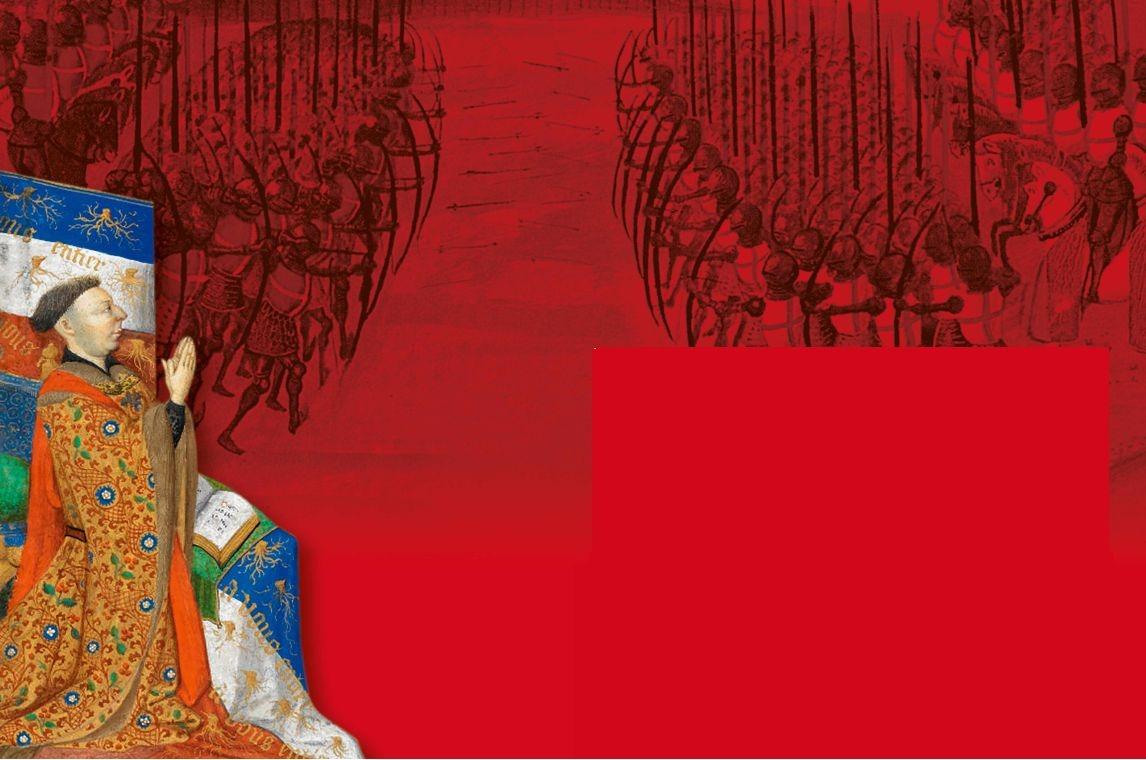
John, Duke of Bedford prays before St George in a c1410–30 miniature. “For 13 years, John effectively held together the English presence in France,” writes Joanna Arman, defending the gains that had been won after the battle of Agincourt (shown in the background)
ALAMY
As black skies faded to grey, and dawn broke on that fateful day in the early 15th century, an English army gazed across a field in northern France. What their eyes encountered was a vastly superior force: some 15,000 French-led troops glared back – their numbers nearly double those of England’s men-at-arms and archers. The English had faced seemingly insuperable odds before, and emerged victorious. But could they really triumph over this well-armed force bolstered by fearsome international allies?
The Hundred Years’ War had been raging for close to a century already, with negotiations between England and France coming and going – but all ultimately failing to decisively end the conflict. The balance of military success had swung one way and then the other in clashes on land and, occasionally, at sea. Many confrontations had ended with English longbowmen proving decisive. But as morning ebbed and the afternoon rolled on, the outcome remained uncertain. Finally, battle commenced – and the English won a great and memorable victory against the odds.